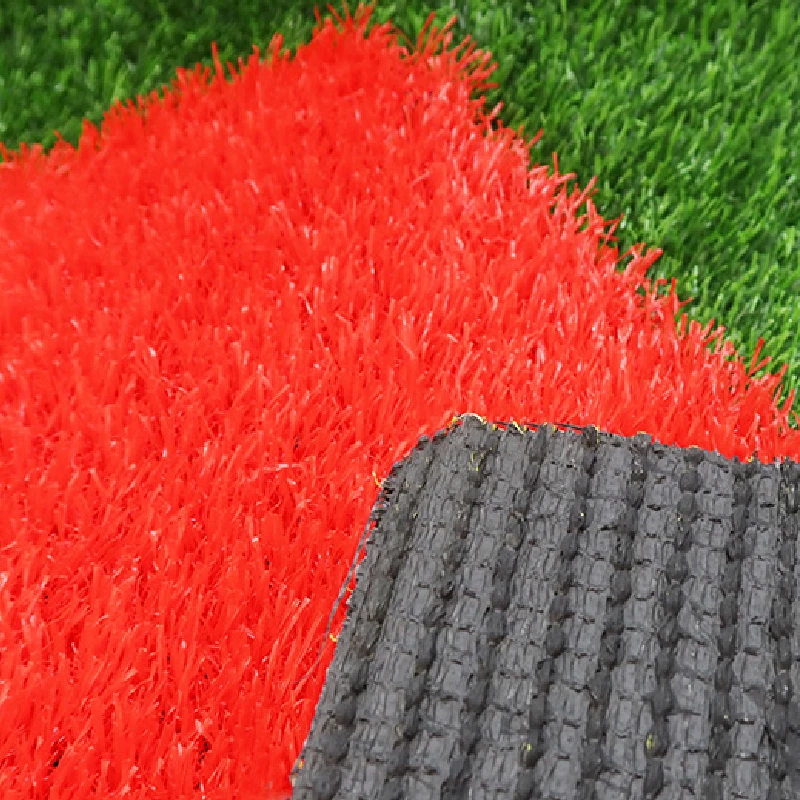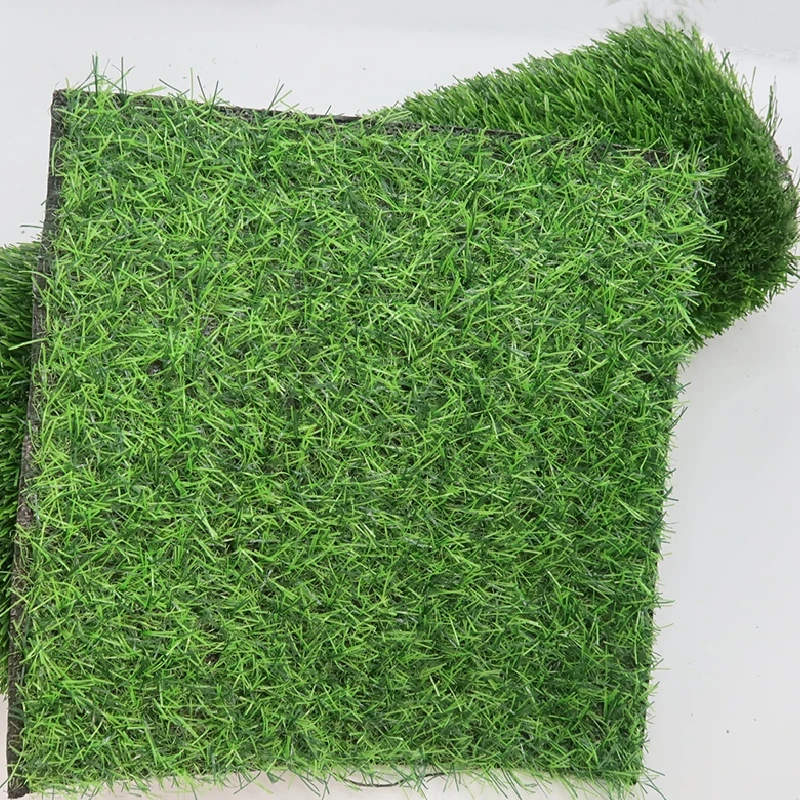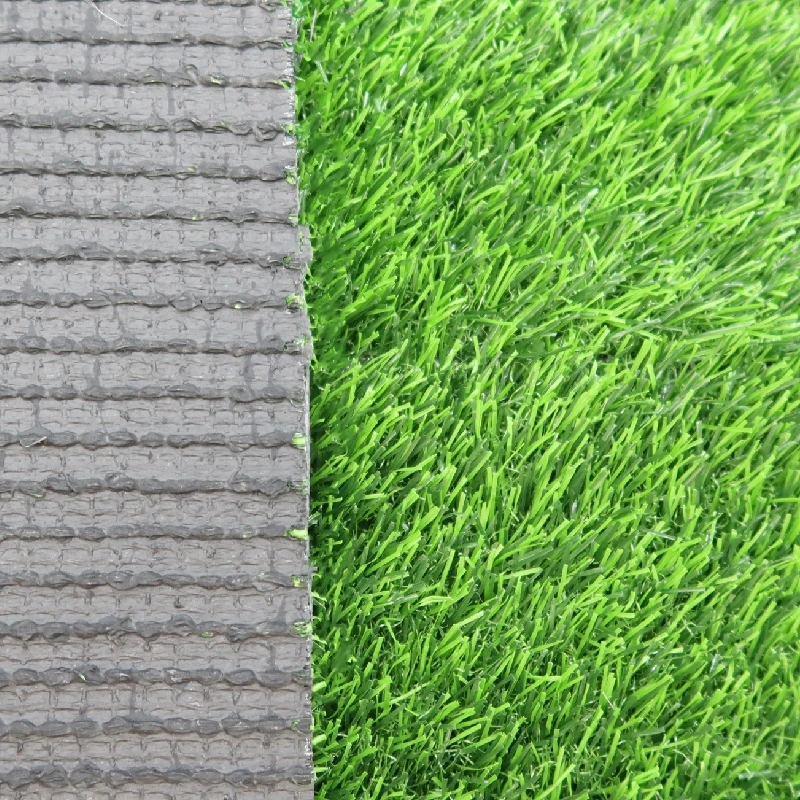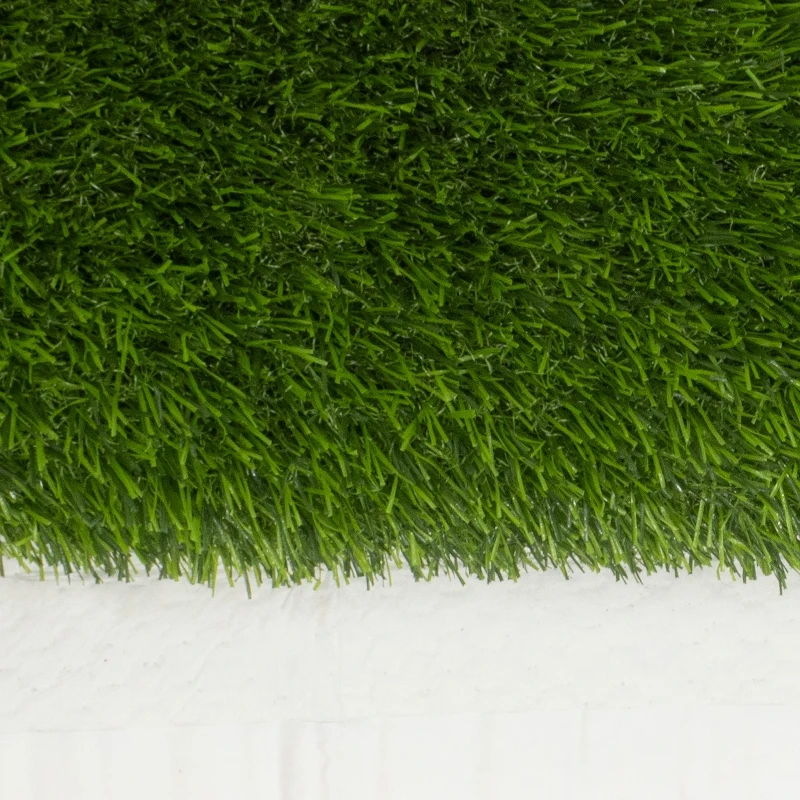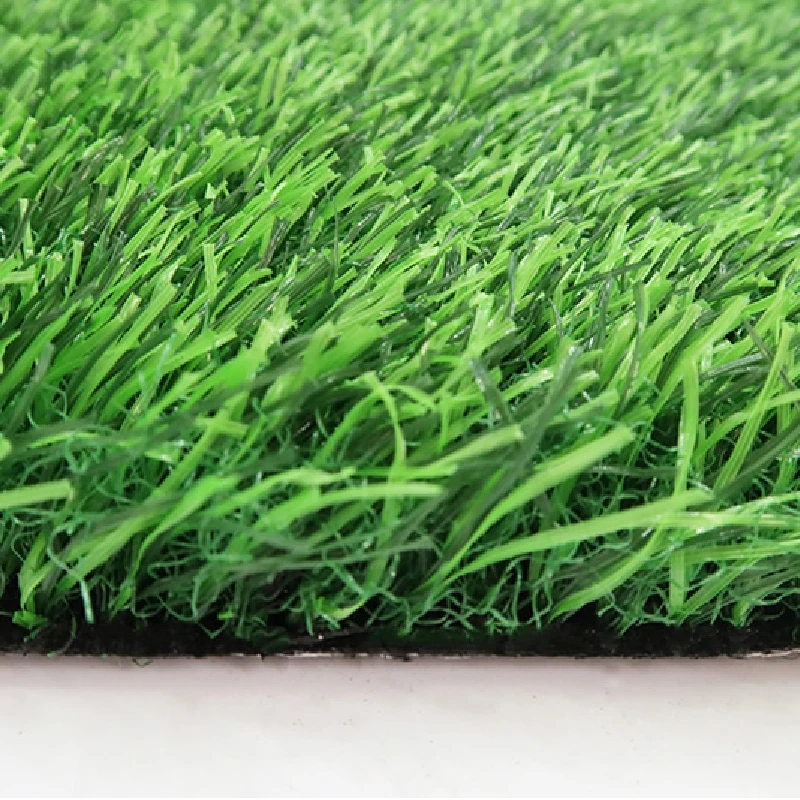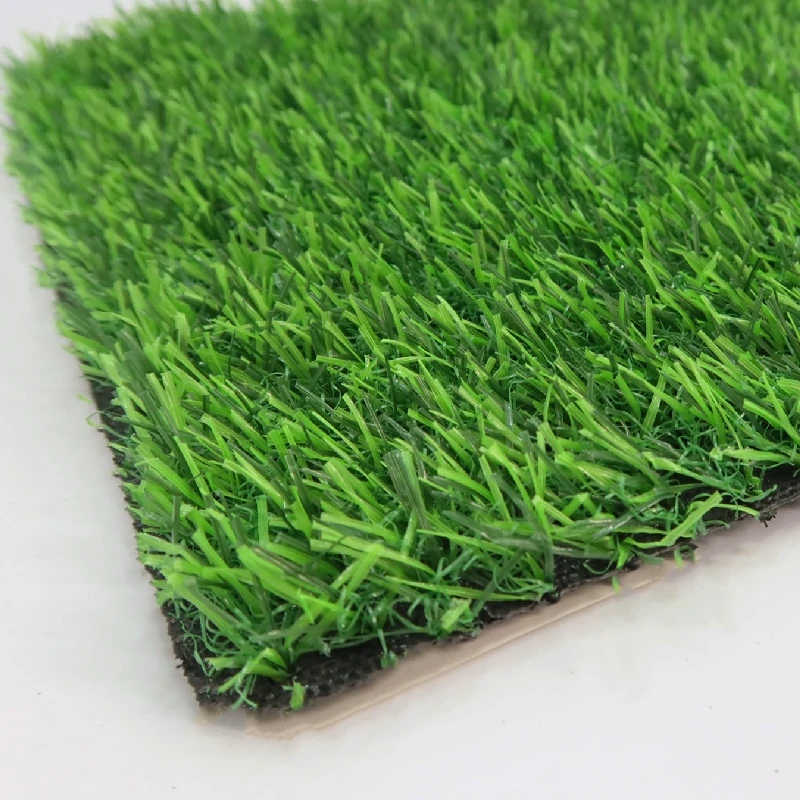Durable and Eco-Friendly Thick Artificial Grass Solutions | Hoya Grass
Nov . 24, 2025 13:49 Back to list
Understanding Thick Artificial Grass: Why It Matters Globally
If you've ever strolled through a perfectly manicured park or admired a sports field that looks pristine year-round, you've probably encountered thick artificial grass. This turf isn’t just for show—it's a game-changer in urban landscaping, sports infrastructure, and even humanitarian projects. In a world increasingly conscious of water scarcity, maintenance costs, and environmental impact, thick artificial grass offers a durable, green alternative that resonates across continents.
Globally, the demand for sustainable landscaping solutions is growing rapidly. According to recent UN reports on urban development and sustainability, cities are seeking options that conserve water and reduce upkeep without sacrificing aesthetics or safety. Thick artificial grass answers that call by providing a resilient surface that’s low-maintenance yet visually inviting.
Takeaway: Thick artificial grass isn't merely decorative; it addresses pressing global concerns about sustainability, resource conservation, and urban livability.
The Global Context of Thick Artificial Grass
Interestingly, the market for artificial turf has been seeing sustained growth, with a CAGR (compound annual growth rate) hovering around 8% over the last 5 years, according to the International Organization for Standardization (ISO). This momentum comes from multiple fronts:
- Water scarcity: Traditional lawns require up to 70% of household water use in arid regions.
- Economic pressure: Maintenance costs for natural grass can exceed artificial turf costs over time.
- Climate change: Drought-resistant landscaping is becoming essential.
Yet, there’s also a challenge: understanding which turf systems truly deliver thick, durable, and eco-friendly options. It’s easy to get dazzled by cheap offers, but the longevity and performance of thick artificial grass can vary wildly.
Mini-summary: Growing environmental and economic pressures worldwide have made thick, high-quality artificial grass an attractive, sometimes necessary, choice.
What Exactly Is Thick Artificial Grass?
In the simplest terms, thick artificial grass mimics natural turf but with a higher density of individual blades and a sturdier backing material. This thickness not only creates a plush, realistic look but also contributes to wear resistance — essential for sports fields, playgrounds, and high-traffic urban spaces.
Industrially, it’s a product of advances in polymer technology, combining materials like polyethylene, polypropylene, and sometimes nylon for strength and flexibility. It serves more than just visual appeal—it supports sustainability efforts by reducing water consumption and pesticide use.
A quick thought: As industries push toward greener solutions, thick artificial grass is a quietly booming segment connecting technology with environmental responsibility.
Key Features of Thick Artificial Grass You Should Know
1. Durability
The defining feature — thick artificial grass is built to last. Thanks to dense fiber construction and UV stabilization treatments, it holds up under harsh weather and frequent use. Many engineers point out that thickness translates directly into longevity. In sports settings, this means fewer repairs and more consistent play surfaces.
2. Comfort & Safety
Because of the added cushioning effect of thicker turf, it reduces injury risk compared to thinner turf variants. It also mimics the softness of natural grass closely, which is crucial for playgrounds or elderly-friendly parks.
3. Water & Maintenance Efficiency
Unlike natural lawns, thick artificial grass requires virtually no watering, fertilizers, or mowing — a boon for dry climates or busy facility managers. This efficiency leads to lower ongoing costs and less environmental strain.
4. Aesthetic Appeal
High-density grass fibers create that lush, vibrant look all year round. Innovations in fiber color and texture mean it can convincingly imitate seasonal changes or natural blade variation.
5. Environmental Impact
Though made of synthetic materials, many modern products incorporate recyclable polymers and manufacturing processes aligned with sustainability certifications. It’s a blend of eco-conscious choice and high performance.
In short: Thickness equals more than just appearance — it enhances durability, comfort, and eco-friendliness.
How Thick Artificial Grass is Used Around the World
From bustling city parks in Europe to sports stadiums in the Middle East, thick artificial grass has carved out an impressive global footprint.
- Sports arenas: Professional football and rugby fields, particularly in wetter climates, use thick turf to ensure playability.
- Urban landscaping: Cities looking to cut water bills replace natural lawns with artificial turf in parks and public spaces.
- Humanitarian shelters: NGOs have started using artificial turf layers to create safer, cleaner ground surfaces in refugee camps.
- Residential gardens: Homeowners seek lawn alternatives that stay green without draining water resources.
For example, in arid regions like California or parts of Australia, thick artificial grass usage has skyrocketed due to ongoing drought conditions and water restrictions.
Advantages of Thick Artificial Grass: Beyond the Surface
- Cost savings: Fewer watering and maintenance expenses over the product's lifespan.
- Sustainability: Reduced chemical runoff and water consumption align with environmental goals.
- Social benefits: Safer play areas for kids, improved accessibility, and consistent quality see increased community satisfaction.
- Reliability: Dependable performance across seasons without muddy patches or dead zones.
Frankly, it feels like a smart investment because it blends practical fiscal sense with longer-term environmental commitment—plus, who doesn't want a perpetually green backyard?
Future Trends & Innovations in Thick Artificial Grass
Advances are not slowing down. New fibers with biodegradable components, integration of cooling technologies to reduce surface heat, and smart sensors embedded within turfs are on the horizon. Researchers are also experimenting with recycled PET fibers sourced from ocean plastics—imagine turning trash into plush, resilient turf.
Digital transformation plays a role, too. Some companies use drones and AI to monitor artificial turf conditions, predicting wear and scheduling timely maintenance—sort of like “smart lawns.”
Current Challenges and How the Industry Is Tackling Them
It’s not all sunshine — thick artificial grass can generate higher upfront costs, and end-of-life disposal sometimes raises sustainability questions. Waste management and microplastic runoff are concerns some environmentalists highlight.
In response, many vendors now offer take-back recycling programs and employ eco-design principles to improve recyclability. Innovations in backing materials are aiming to reduce environmental footprints too.
Frequently Asked Questions About Thick Artificial Grass
- How long can thick artificial grass last under regular use?
- Typically, quality thick artificial grass can last between 10 to 15 years, depending on traffic and climate conditions. Proper installation and routine care definitely maximize longevity.
- Is thick artificial grass safe for children and pets?
- Absolutely. Modern thick turf is designed with soft, non-toxic materials and enhanced cushioning, reducing injury risks for kids and providing comfortable play areas for pets.
- Can thick artificial grass withstand extreme weather?
- Yes. UV-resistant fibers and robust backing combine to resist sun fading, heavy rain, and freezing temperatures, making it suitable for diverse climates worldwide.
- What maintenance does thick artificial grass require?
- Maintenance mainly involves occasional brushing to keep fibers upright, rinsing to remove dust or pet waste, and removing debris—much less than natural grass.
- Are there sustainable options available for artificial turf?
- Increasingly so. Many manufacturers now produce recyclable or partially bio-based fiber options and focus on eco-friendly manufacturing and end-of-life recycling programs.
Product Specification Table
| Feature | Specification | Benefit |
|---|---|---|
| Pile Height | 35mm | Plush, natural feel |
| Density (stitches/m²) | 18,000 | High durability & wear resistance |
| Fiber Material | Polyethylene & Nylon blend | Strength & flexibility |
| Backing | Dual-layer polyurethane | Water drainage & stability |
| UV Treatment | Yes, 8 years warranty | Fade resistance |
Vendor Comparison: Leading Producers of Thick Artificial Grass
| Vendor | Material Quality | Eco Features | Price Range (USD/sq.m) | Warranty |
|---|---|---|---|---|
| GreenTurf Pro | Premium Polyethylene blend | Recyclable fibers, low VOC | $25 - $35 | 12 years |
| EverLawn | Polyethylene & Nylon mix | Partial recycled content | $20 - $30 | 10 years |
| Hoya Grass | Polyethylene advanced fibers | Ocean plastic recycled fibers | $28 - $38 | 15 years |
Wrapping Up: Why Thick Artificial Grass Deserves a Spot in Your Plans
Whether you're a municipal planner trying to slash water bills, a landscape architect chasing that perfect year-round lawn, or an NGO installing safe zones in crisis-hit areas, thick artificial grass brings real, lasting value. It’s not just a turf—it’s a smart environmental and economic move. Plus, it looks great while doing it.
Curious to explore the options? Visit our website thick artificial grass collection for detailed info and personalized guidance.
References
- International Organization for Standardization (ISO) - Industry standards and environmental guidelines.
- United Nations Climate Change Initiatives - Reports on sustainable urban development.
- Wikipedia - Artificial Turf - General overview and history.
-
Durable, Eco-Friendly Turf for Balcony | Enhance Your Urban Space
NewsNov.24,2025
-
Turf Between Pavers: Sustainable Green Paving Solutions for Modern Urban Spaces
NewsNov.24,2025
-
Discover the Benefits of Turf and Pavers Backyard | Sustainable Outdoor Design
NewsNov.24,2025
-
Top Quality Artificial Grass – Sustainable, Durable, and Stylish Turf Solutions
NewsNov.24,2025
-
Synthetic Turf: Sustainable Green Solutions for Sports, Industry & Urban Living
NewsNov.24,2025
Products categories



